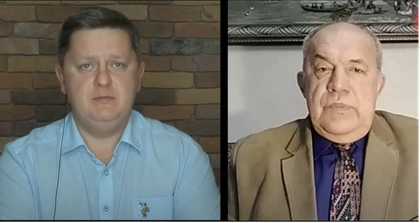European nations have pumped billions into defence spending and military aid since Russia's invasion of Ukraine, but analysts say the continent's defence industry is still far from able to supply Kyiv alone.
About $44.5 billion in arms have flowed from the United States to Ukraine since Russian tanks rolled in on February 24, 2022.
JOIN US ON TELEGRAM
Follow our coverage of the war on the @Kyivpost_official.
But Washington's failure to agree to a new tranche of support and the potential re-election of Donald Trump to the White House in November could leave it up to Europe to plug a vast gap.
EU spending on aid has totalled 28 billion euros ($30 billion) over two years, with a further 20 billion planned this year, according to the bloc's top diplomat, Josep Borrell.
German Chancellor Olaf Scholz has nevertheless urged allies to "do more".
Individual member states have upped defence spending, with France's President Emmanuel Macron even talking of a "war economy".
But just nine of the 27 member states spent more than NATO's nominal floor of two percent of GDP on defence last year.
Germany, France and Italy -- the EU's wealthiest countries, with world-class defence industries -- were not among them.
"European countries have not massively increased their budgets since the invasion of Ukraine, and they haven't been ordering much either" from manufacturers, said Renaud Bellais, an economist specialising in the defence industry.
- 'Fragmented' -
Production lines are rolling out equipment, including anti-aircraft and anti-tank missiles, shells and cannons, whether heading for Ukraine or rebuilding depleted national stockpiles.

Holiday Spirit Thrives Among Ukrainians Despite War, Study Finds
The EU has fallen short of an initial goal to ramp up production of critical 155mm artillery shells, but expects to build 1.4 million of them in 2025 -- 200,000 more than the US plans.
"European production capacity isn't so negligible, but it's quite fragmented -- for instance, 15 shell manufacturers spread across 11 countries -- and not at all coordinated," Bellais said.
Meeting Ukrainian demand "will take time, because we haven't got organised to do it", while actually building military equipment can take "several months or even years", he added.
"Currently the European defence and technology-industrial base is not able to meet wartime demands," analyst Christian Moelling of German think tank DGAP wrote in a recent note.
With defence spending largely cut to the bone during the post-Cold War "peace dividend" years, European industry "lost the capacity to scale up production", he added.
Rather than rebuilding domestic manufacturing, some European countries have turned to "off-the-shelf procurement", especially from the United States -- already seen especially in Central and Eastern Europe as the indispensable security guarantor, Moelling said.
Of 100 billion euros in arms spending by EU countries from 2022 to mid-2023, 63 percent went to buy US products and 13 percent to South Korea.
- 'National egotism' -
Meanwhile European defence firms are reluctant to invest in ramping up production capacity without contracts guaranteeing sales for the long term -- fears Brussels is struggling to soothe by organising group orders among multiple states.
"It remains an open question whether increased defence spending in the EU will translate into strengthening EU industry... or, on the contrary, will deepen dependence" on allies such as Washington, Aleksandra Koziol of Poland's PISM think tank wrote in a research note.
Not all EU countries back the drive for "strategic autonomy" by leading members such as France, lacking a direct economic self-interest.
Central and Eastern European industries "are not in a position to contribute significantly to European projects" in defence, Moelling wrote.
Where states have national champions they are not shy about pushing them, leaving Europe in "a framework of national egotism", economist Bellais said, pointing to "tension between the language on defence and budget restrictions.
"People are scared, but not enough to change the way they do things," he added.
Nevertheless, "unless the Europeans fully integrate their defence effort and operate as a single entity, they will never be able to match the breadth and depth of US capabilities", said Mark Cancian of US think tank CSIS.
Some in Kyiv nevertheless believe the Europeans will one day be able to shoulder the Americans' share of the load.
"The process has already begun," one Ukrainian diplomat told AFP.
"It's going to take time, we just have to hang on."
You can also highlight the text and press Ctrl + Enter






